Memory/help With Exams Spell Jar 💜
Memory/help with exams spell jar 💜
Intended to soothe the mind and help the user recall information during finals/midterms
I made a small spell jar to carry around but this would also work with other containers (small tin, pouch, etc. - reuse things!)
Materials:
Container
Preferred method of cleansing (incense, sound, etc.)
Lavender
Salt (i used pink salt)
Yarrow
Elderflower
3 cloves
1 bay leaf
Amethyst
Quartz
Citrine
Pen/pencil/etc.
Purple, white, grey, or bronze wax to seal container
Step 1:
Cleanse your materials and place them either on your altar or study space
Step 2:
Create a sigil and write it on the bay leaf. You can derive sigils from words/phrases like "knowledge" "memory" "good grades" or really anything. Break the bay leaf into bits and set it aside.
Step 3:
Add herbs and crystals in this order:
Salt
Crushed bay leaf
Amethyst
Yarrow
Elderflower
Lavender
Citrine
Cloves
Step 4:
Close the container and seal it with wax. If the container is a pouch, make a little wax medallion by dripping it on a smooth surface such as a mirror.
Step 5:
Charge it by keeping it near you while you study. Cleanse with moonlight or blowing on it.
Good luck!
More Posts from Dipstickflopdoodle and Others
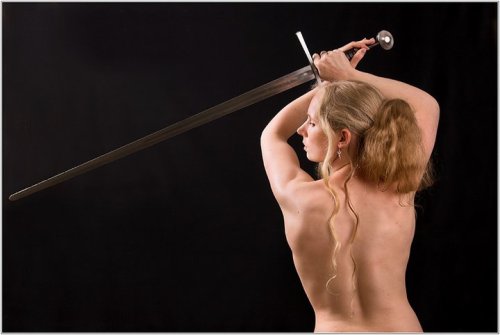
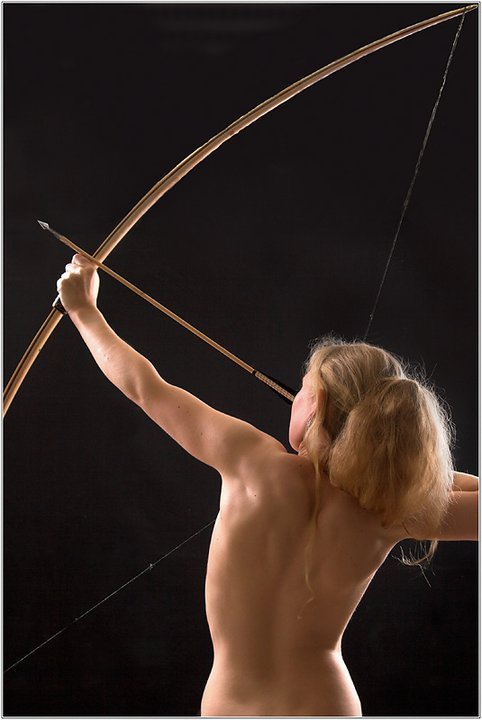
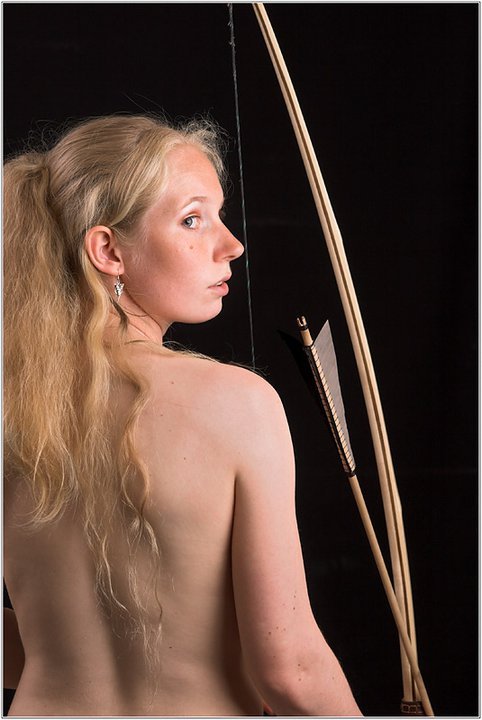
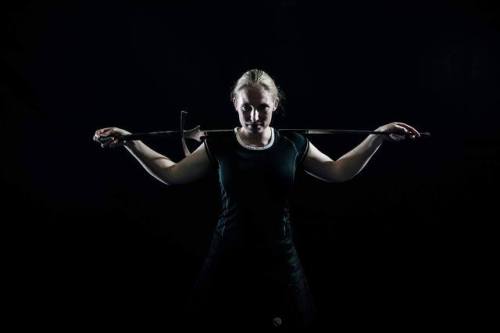
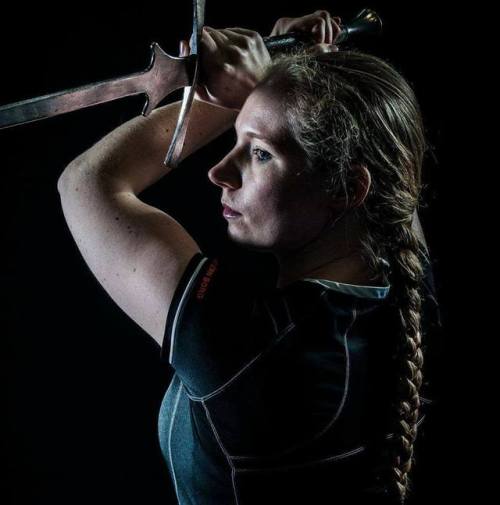

Dutch longsword fencer Tosca Beuming
Photographed by Martin Philippo and Andress Kools
Self-Love
Spell Jar to promote feelings of self worth, confidence and love.
Rose (healing, confidence, love)
Cinnamon (happiness)
Rosemary (protection, love)
Lavender (peace, strength, happiness)
Pink salt (cleanse, love)
Rose quartz (self love, compassion)
Intention
Pink wax
Substitute or exclude any materials as you need.
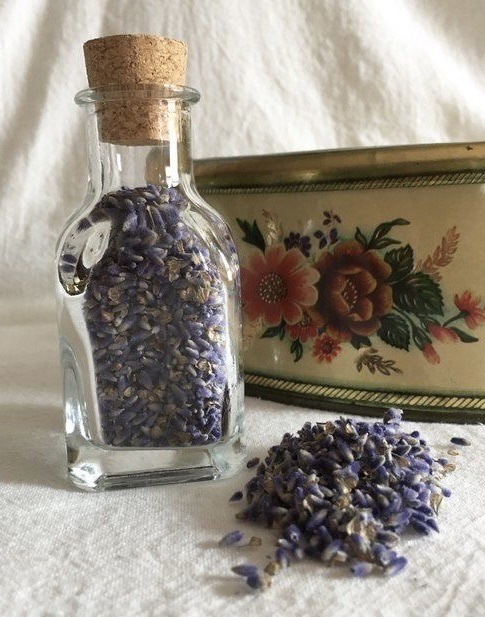

Love <3
Random things about your future lover
Pick a picture from below



DM to purchase a reading! All the prices are listed on my paid reading post.
Picture 1
May be an earth sign. Virgo, Taurus or Capricorn.
They have lots of hobbies and things they like to do in their free time.
They hate it when people waste their time.
Very straightforward and cutthroat.
May be cheated on or may have severe trust issues.
They always working on something.
They are gonna come into your life really soon and unexpectedly.
They will really like the way you dress yourself.
They may even be your potential life partner or definately a long term relationship.
They have really beautiful hands and may be an artist.
Initials A,D,G,Z,U,C,B,W
They are really protective of the people they love.
Picture 2
Definitely a gentleman. Very traditional.
They love taking care of themselves.
May be a leo or have sun in their 1st or 5th house.
You may meet them around the holiday season.
They are really patient and think before they speak.
Very poetic with their words. Love language may be giving handwritten letters.
Very mysterious aura, don't talk much to people or never share anything about themselves.
You may meet them after a breakup or heartbreak.
You both work in the same career field.
May be your boss or your senior.
Very passionate and dedicated about what they do.
They love talking but not on texts.
Picture 3
They may be really popular among the opposite gender. They seem to have a lot of admires.
A perfectionist and a workaholic. Loves their job with their whole heart.
You may meet them through a trip or while travelling.
Their love language is gift giving and acts of service.
They are really practical but may get delulu sometimes.
They are emotionally mature and do not hide their feelings.
It's giving fire sign energy. May require more sleep than an average person.
Says what's on their mind. May be a bit rude sometimes.
May meet them in 2 months.
May be Aquarius, Scorpio or cancer rising .
You literally manifested them. They are a dream come true for you.
May have light colored hair.
Guys I know I have been inactive for a long time but I am just going through a lot this month. Wish me luck and expect more posts in the future.

What are the different “types” of witches?
During the infamous witch persecutions that happened across Europe and America between 1450 and 1750, the members of the Church that led the inquisitions had a very clear idea of what they meant by a “witch”. These were mostly women, but sometimes men, who had entered into pacts with the devil and his servants.
But the term “witch” has been used to refer to many different types of people across the centuries. In the Viking age, Norse witches were principally seeresses who could also detect negative energies that might be affecting a household or community. In the Greco-Roman world, witches and magicians were again principally diviners. In ancient Egypt, they wrote down spells to heal or remove hexes. In early medieval Europe, they were often wise women and healers who provided alternative medical care.
In the modern world, when someone refers to themselves as a witch, it could mean various things. Witchcraft is a very open practice, and you do not need to fit into a specific mold. That said, the witchcraft community has coined some terms to help define the different types of witches. Below is a list of some of the most common types of witches.
Coven Witch
A coven witch is a practitioner who is a member of a coven, which is simply a community of witches. Covens gather to teach one another and to pool their energy and power to have a greater impact on the world around them. Covens will sometimes have formal structures and admissions processes and are usually led by a high priestess or priest.
Solitary Witch
A solitary practitioner is a witch who prefers to practice on their own. Their journey of learning and self-discovery is between them and a higher power, and they may choose not to tell others about their calling and practice. Solitary practitioners choose this approach and are not simply solitary due to a lack of other witches.
Hedge Witch
Hedge witches tend to be natural witches who use the power of nature to create remedies and harness certain powers. They have great respect for nature, will often work with the elements, and tend to be knowledgeable herbalists. Hedge witches are often minimalist and practical, cutting away much of the ritual that has developed around certain magical practices.
Ceremonial Witch
Ceremonial witches actively engage in rituals and ceremonies to tap into the magic that exists within the universe. This often involved being part of an order that teaches the required rituals. The most well-known example of a ceremonial magic order is the Hermetic Order of the Golden Dawn.
Baby Witch
The term baby witch is used for someone who is just starting out on the witchcraft journey, so it is just another term for a beginner witch. Very often, baby witches have eclectic interests as they are still exploring broadly to find the type of witchcraft that they feel most connected to. There is no specific point when a person stops being a baby witch, but it is usually when they feel confident to speak authoritatively about their craft.
Eclectic Witch
Not every witch chooses to specialize in a specific area, and some continue to have a broad and eclectic practice incorporating several different traditions. These types of witches are called eclectic, and they will often mi traditions to create new rituals and approaches.
Divination Witch
Divination witches concentrate principally on seeing the future or gaining a deep understanding of the current reality to make educated inferences about the future. The method of their practice can take many different forms. They may read the Tarot, cast runestones, read palms, commune with the spiritual realm, or something else.
Cosmic Witch
Cosmic witches, also sometimes called Lunar witches, use astronomy and astrology as the basis of their craft. They are highly aware of the impact that the movement of the heavenly bodies have on the earth, especially the moon. But rather than just telling you your horoscope, they use their knowledge of these energies to affect active change in the world.
Death Witch
A death witch is another term for a necromancer, but rarely does their practice involve bringing back and controlling the dead. Witches who work as mediums and gain insight and power by asking the deceased for their assistance.
Green Witch
Green witches are very connected with nature and the elements and principally work towards healing and nurturing. They may create herbal remedies or engage in natural powers, such as the chakras, to nurture balance and alignment in the body and spirit.
Kitchen Witch
Kitchen witches are a variety of green witch, but they focus on imbuing their cooking and baking with magic, often to heal and invigorate those who eat. They use their knowledge of the magical properties of ingredients and may engage in rituals to imbue their baking with specific energies.
Energetic Witch
Energetic witches are often drawn toward the vibrations of crystals and the auras of individuals. They are good at reading, harnessing, and directing the natural energies of objects to influence the energies of individuals and situations.
Sex Witch
Sex witches use the power and clarity that comes with orgasm to push into the spiritual realm. This can be a solitary practice, or one done with others. Probably the most famous sex magic practitioner was Aleister Crowley.
Folk Witch
Folk witches tend to preserve, maintain, and recreate historic magic and ritual practices established by pre-Christian ancestors.
Hereditary Witch
Hereditary witches come from a family of witches and will inherit or learn their practice from their elders. Their family has often been the shamanic heart of a community for generations.
Innate Witch
Innate witches are individuals born with certain abilities that look like magic. These can be hereditary, but this is not always the case. The ability, whether it be mediumship or the ability to heal, can vary greatly.
Grey Witch
People will often talk about black and white witches. The idea is that black witches use their power for their own personal gain, while white witches use their power for the greater good and follow the principle of “do no harm”. Grey witches, like white witches, tend to be driven by their desire to do good in the world, but they may be willing to do curses or hexes to punish those they see as evil doers.
You can see the broad number of different ways that a person may consider themselves a witch, and this is far from a comprehensive list. Plus, not every witch will fit into one of the categories that the witchcraft community use as shorthand to communicate about their practice. So, how would you define yourself as a witch?
[Full article here]
𝑺𝑪𝑬𝑵𝑨𝑹𝑰𝑶 𝑷𝑹𝑶𝑴𝑷𝑻𝑺.
↬ OF FAIRYTALES, FOLKLORE AND FAEKIND.
scenarios inspired by various settings, encounters & magic tucked between pages, fashioned by the author.
+ feel free to change pronouns / roles !
FAIRYTALES.
‘ let me guess, you thought a true love’s kiss would help you. ’
‘ you will always follow the trail in the wood, and it will guide you on the same path, to the same cottage, the same witch. it will always be your undoing. ’
‘ i have never seen a more tragic creature. how might i help you ? ’
‘ you must take this knife and plunge it into his / her / their heart. ’
‘ forget yourself. that is how you break your curse. ’
‘ remove this thorn from my hand, and you will be rewarded. ’
‘ i’m tired of being a prince. i think i would actually enjoy being a frog. ’
‘ tell me of the beast, and i will hunt it for you. ’
‘ mice are never just mice, and pumpkins are rarely just pumpkins. ’
‘ i don’t think breaking a spell should be this simple. ’
‘ i never thought i’d return here, to the site where it all began. ’
‘ are you an orphan ? it’s just that they’re always finding themselves in magical predicaments. ’
‘ the mirror speaks falsely in your ear. it is your true curse. ’
‘ my heart feels uneasy, although i am free. is it supposed to ? ’
‘ i’m sorry, it’s just that i thought this is the part of the quest where the animals ought to start talking to me. ’
‘ of course i plan on going to the ball. why wouldn’t i ? ’
‘ jealousy has made more witches out of women than adam’s rib. ’
‘ where has choosing goodheartedness and having golden hair ever gotten you ? ’
‘ are you a helpful wizard, or the kind that sits in a tower reading moldy books ? ’
‘ i’m dreadfully bored. who knew waiting for a prince was so strenuous ? ’
‘ we all have towers we must leave, and magic that will try to thwart us. ’
‘ i’m afraid for the clock to strike. the hour will ring in the place of my heartbeat when we must be parted. ’
‘ i had no idea carpets could fly. or pigs for that matter. ’
‘ what would happen if the knight did not arrive to the castle, and the dragon made a den of it and a hoard of its people and prize of its princess ? ’
‘ i sometimes think i was switched out at birth, like a lizard in a bird’s nest. i belong somewhere else. ’
‘ in another kingdom exists a throne and a crown that is mine by right. ’
‘ if i did not wake up one day, i would still be waiting on a spinning wheel, dutifully bored. ’
‘ something in me knows you are here for my heart. ’
FOLKLORE.
‘ in all the myths i’ve heard, it’s never been worthwhile to approach strange sights. it’s best to turn around and pretend you never saw them. ’
‘ nothing is folklore until it exists longer than consciousness remembers, and lives in spite of it. ’
‘ i’ve heard your name before, in songs and lengthy ballads. ’
‘ whatever has led you here to me, there is destiny in its making. ’
‘ the beast returns every century or so, and tries to devour us. it will come again before long. ’
‘ a pretty face is not nothing. it earns you a hearth and a kind hand, after all. ’
‘ their lips are red as blood, and their teeth carve ruin into throats. ’
‘ aren’t dragons supposed to breathe fire and make a fuss about having their treasure found ? ’
‘ someday you will become a pilgrim, a saint, or a favored story, while i will be a voice on the wind. ’
‘ the stories say brides don’t live to the light before demons devour them. why should i become one ? ’
‘ there was another girl like you once, in a small town like this one. i can’t remember if she became the monster or died trying to escape it. ’
‘ remember to festoon the hearth with garlic, or rosemary, or one of those mundane herbs that keep evil out. ’
‘ that sounds like nothing but a tall tale, but i’m certain smaller minds would eat it up. ’
‘ to cross this bridge, you’ll have to pay a heavy toll. ’
‘ don’t stray too far from the path set before you, or something interesting might happen. ’
‘ i’ve passed that yard of crops a million times, but the crow never moved from its post until this morning. ’
‘ it is as though ancient fears are still in us like scars or stitches. ’
‘ graveyards aren’t where you find ghosts. look for them in places that feel like memories you shouldn’t have. ’
‘ stories reap princes from peasants as if their skins were crops in the ground. ’
‘ what form does your fear take ? surely not that of a bear or a lion. such things are too assuring. ’
‘ i found myself where everything was too familiar to be real. ’
‘ in safe beds on cold dark nights, we learn to face the monsters in our own minds. ’
FAEKIND.
‘ you’re not to partake in a fairy feast. don’t you know it’s the food that will devour you ? ’
‘ i’m sorry you did not read the eyes of the trees before finding yourself here. ’
‘ i wish to go back. i want to forget everything. ’
‘ you think that believing in us is enough to protect you ? that it will kill us if you forget, and we prey upon your unknowing ? ’
‘ step around the ring three times, like a backwards clock. that’s how you get to fairyland. ’
‘ i’ve never heard such sweet music before. ’
‘ where the trees begin to twist and groan in their roots, remember you must not make a right turn. ’
‘ i didn’t feel like i’d stepped into another world, but like it stepped into me. i knew i was there and forgot i’d left anything behind. ’
‘ how amusing. a human ! ’
‘ would you be my bride if i were to take you into the ground ? ’
‘ i know of tunnels you might take, the burrows of trolls and rabbits. ’
‘ don’t take anything from this realm, none of it is worth the price of keeping. ’
‘ there are courts by many titles in the lands beyond the veil, all of them other. ’
‘ names are not like currency here; they are more precious than diamonds and legacies. ’
‘ did you think all of us looked like goblins ? ’
‘ getting here is easy, but getting home is quite the trick. ’
‘ i shall give you a riddle, and it will puzzle you until you know the answer but forget your own soul. ’
‘ a bloodline is nothing when you’ve outlived civilizations. ’
‘ refusing my hospitality is like human sin, and it will bring worse upon you. ’
‘ everything here is and isn’t, and things are and aren’t. ’
‘ on lonely nights i stare into the trees, and a strange face leers back. ’
‘ the thrones here are made of bones and blood, and built upon decay. ’
‘ a third time is not a charm, but a bargain. it says that you want something enough to wager your sense. ’
‘ it is dangerous to think that magical beings do not have human intensities. ’
as much as the concept of Jesus being a fairly normal lad has its charms, im personally very intrigued by the idea of him being just… extremely weird. not even in a mystical sense, just…….staggeringly BIZZARRE.
you go to the well to get some water, and here’s Miriam’s boy, staring at the sky, completely still. his expression is unreadable. you hazard a hello and ask how he’s doing, and he slowly, unblinkingly, lowers his gaze on you (he’s 8 and is missing his frontal teeth, not that this is making you any less uncomfortable) and says “I cannot speak of the state of my being, Nathan son of Saul, my brother, but rejoice for the water you shall take today will be as pure as the soul of the children of Heaven”
…you start sweating
Ok so when YOU put on skits for your family, your parents think you’re cute and show you “love” and “affection.” But when I do it, it’s all “what means this play?” and “u have to go to england for committing treason”

grass green again post rose window crochet blanket :)
Words for Skin Tone | How to Describe Skin Color
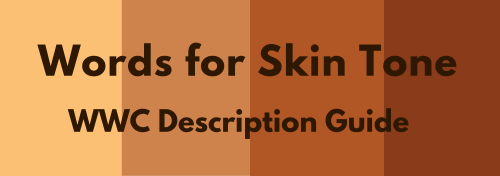
We discussed the issues describing People of Color by means of food in Part I of this guide, which brought rise to even more questions, mostly along the lines of “So, if food’s not an option, what can I use?” Well, I was just getting to that!
This final portion focuses on describing skin tone, with photo and passage examples provided throughout. I hope to cover everything from the use of straight-forward description to the more creatively-inclined, keeping in mind the questions we’ve received on this topic.
Standard Description
Basic Colors

Pictured above: Black, Brown, Beige, White, Pink.
“She had brown skin.”
This is a perfectly fine description that, while not providing the most detail, works well and will never become cliché.
Describing characters’ skin as simply brown or beige works on its own, though it’s not particularly telling just from the range in brown alone.
Complex Colors
These are more rarely used words that actually “mean” their color. Some of these have multiple meanings, so you’ll want to look into those to determine what other associations a word might have.

Pictured above: Umber, Sepia, Ochre, Russet, Terra-cotta, Gold, Tawny, Taupe, Khaki, Fawn.
Complex colors work well alone, though often pair well with a basic color in regards to narrowing down shade/tone.
For example: Golden brown, russet brown, tawny beige…
As some of these are on the “rare” side, sliding in a definition of the word within the sentence itself may help readers who are unfamiliar with the term visualize the color without seeking a dictionary.
“He was tall and slim, his skin a russet, reddish-brown.”
Comparisons to familiar colors or visuals are also helpful:
“His skin was an ochre color, much like the mellow-brown light that bathed the forest.”
Modifiers
Modifiers, often adjectives, make partial changes to a word.The following words are descriptors in reference to skin tone.
Dark - Deep - Rich - Cool
Warm - Medium - Tan
Fair - Light - Pale
Rich Black, Dark brown, Warm beige, Pale pink…
If you’re looking to get more specific than “brown,” modifiers narrow down shade further.
Keep in mind that these modifiers are not exactly colors.
As an already brown-skinned person, I get tan from a lot of sun and resultingly become a darker, deeper brown. I turn a pale, more yellow-brown in the winter.
While best used in combination with a color, I suppose words like “tan” “fair” and “light” do work alone; just note that tan is less likely to be taken for “naturally tan” and much more likely a tanned White person.
Calling someone “dark” as description on its own is offensive to some and also ambiguous. (See: Describing Skin as Dark)
Undertones
Undertones are the colors beneath the skin, seeing as skin isn’t just one even color but has more subdued tones within the dominating palette.
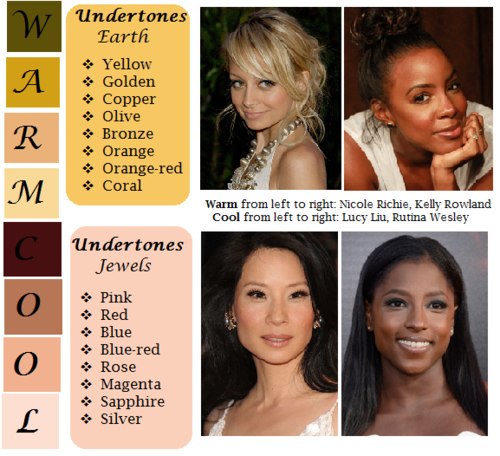
pictured above: warm / earth undertones: yellow, golden, copper, olive, bronze, orange, orange-red, coral | cool / jewel undertones: pink, red, blue, blue-red, rose, magenta, sapphire, silver.
Mentioning the undertones within a character’s skin is an even more precise way to denote skin tone.
As shown, there’s a difference between say, brown skin with warm orange-red undertones (Kelly Rowland) and brown skin with cool, jewel undertones (Rutina Wesley).
“A dazzling smile revealed the bronze glow at her cheeks.”
“He always looked as if he’d ran a mile, a constant tinge of pink under his tawny skin.”
Standard Description Passage
“Farah’s skin, always fawn, had burned and freckled under the summer’s sun. Even at the cusp of autumn, an uneven tan clung to her skin like burrs. So unlike the smooth, red-brown ochre of her mother, which the sun had richened to a blessing.”
-From my story “Where Summer Ends” featured in Strange Little Girls
Here the state of skin also gives insight on character.
Note my use of “fawn” in regards to multiple meaning and association. While fawn is a color, it’s also a small, timid deer, which describes this very traumatized character of mine perfectly.
Though I use standard descriptions of skin tone more in my writing, at the same time I’m no stranger to creative descriptions, and do enjoy the occasional artsy detail of a character.
Creative Description
Whether compared to night-cast rivers or day’s first light…I actually enjoy seeing Characters of Colors dressed in artful detail.
I’ve read loads of descriptions in my day of white characters and their “smooth rose-tinged ivory skin”, while the PoC, if there, are reduced to something from a candy bowl or a Starbucks drink, so to actually read of PoC described in lavish detail can be somewhat of a treat.
Still, be mindful when you get creative with your character descriptions. Too many frills can become purple-prose-like, so do what feels right for your writing when and where. Not every character or scene warrants a creative description, either. Especially if they’re not even a secondary character.
Using a combination of color descriptions from standard to creative is probably a better method than straight creative. But again, do what’s good for your tale.
Natural Settings - Sky

Pictured above: Harvest Moon -Twilight, Fall/Autumn Leaves, Clay, Desert/Sahara, Sunlight - Sunrise - Sunset - Afterglow - Dawn- Day- Daybreak, Field - Prairie - Wheat, Mountain/Cliff, Beach/Sand/Straw/Hay.
Now before you run off to compare your heroine’s skin to the harvest moon or a cliff side, think about the associations to your words.
When I think cliff, I think of jagged, perilous, rough. I hear sand and picture grainy, yet smooth. Calm. mellow.
So consider your character and what you see fit to compare them to.
Also consider whose perspective you’re describing them from. Someone describing a person they revere or admire may have a more pleasant, loftier description than someone who can’t stand the person.
“Her face was like the fire-gold glow of dawn, lifting my gaze, drawing me in.”
“She had a sandy complexion, smooth and tawny.”
Even creative descriptions tend to draw help from your standard words.
Flowers
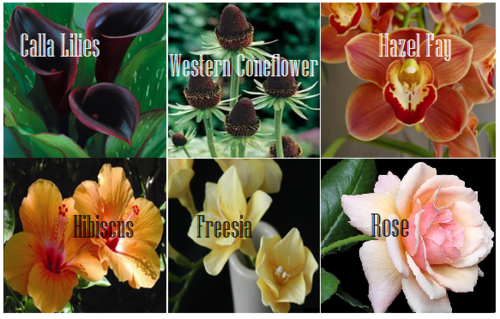
Pictured above: Calla lilies, Western Coneflower, Hazel Fay, Hibiscus, Freesia, Rose
It was a bit difficult to find flowers to my liking that didn’t have a 20 character name or wasn’t called something like “chocolate silk” so these are the finalists.
You’ll definitely want to avoid purple-prose here.
Also be aware of flowers that most might’ve never heard of. Roses are easy, as most know the look and coloring(s) of this plant. But Western coneflowers? Calla lilies? Maybe not so much.
“He entered the cottage in a huff, cheeks a blushing brown like the flowers Nana planted right under my window. Hazel Fay she called them, was it?”
Assorted Plants & Nature

Pictured above: Cattails, Seashell, Driftwood, Pinecone, Acorn, Amber
These ones are kinda odd. Perhaps because I’ve never seen these in comparison to skin tone, With the exception of amber.
At least they’re common enough that most may have an idea what you’re talking about at the mention of “pinecone.“
I suggest reading out your sentences aloud to get a better feel of how it’ll sounds.
“Auburn hair swept past pointed ears, set around a face like an acorn both in shape and shade.”
I pictured some tree-dwelling being or person from a fantasy world in this example, which makes the comparison more appropriate.
I don’t suggest using a comparison just “cuz you can” but actually being thoughtful about what you’re comparing your character to and how it applies to your character and/or setting.
Wood

Pictured above: Mahogany, Walnut, Chestnut, Golden Oak, Ash
Wood can be an iffy description for skin tone. Not only due to several of them having “foody” terminology within their names, but again, associations.
Some people would prefer not to compare/be compared to wood at all, so get opinions, try it aloud, and make sure it’s appropriate to the character if you do use it.
“The old warlock’s skin was a deep shade of mahogany, his stare serious and firm as it held mine.”
Metals

Pictured above: Platinum, Copper, Brass, Gold, Bronze
Copper skin, brass-colored skin, golden skin…
I’ve even heard variations of these used before by comparison to an object of the same properties/coloring, such as penny for copper.
These also work well with modifiers.
“The dress of fine white silks popped against the deep bronze of her skin.”
Gemstones - Minerals
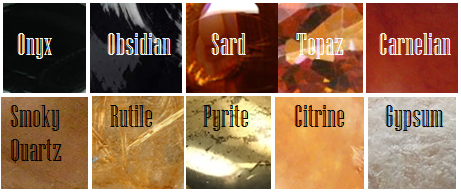
Pictured above: Onyx, Obsidian, Sard, Topaz, Carnelian, Smoky Quartz, Rutile, Pyrite, Citrine, Gypsum
These are trickier to use. As with some complex colors, the writer will have to get us to understand what most of these look like.
If you use these, or any more rare description, consider if it actually “fits” the book or scene.
Even if you’re able to get us to picture what “rutile” looks like, why are you using this description as opposed to something else? Have that answer for yourself.
“His skin reminded her of the topaz ring her father wore at his finger, a gleaming stone of brown, mellow facades.”
Physical Description
Physical character description can be more than skin tone.
Show us hair, eyes, noses, mouth, hands…body posture, body shape, skin texture… though not necessarily all of those nor at once.
Describing features also helps indicate race, especially if your character has some traits common within the race they are, such as afro hair to a Black character.
How comprehensive you decide to get is up to you. I wouldn’t overdo it and get specific to every mole and birthmark. Noting defining characteristics is good, though, like slightly spaced front teeth, curls that stay flopping in their face, hands freckled with sunspots…
General Tips
Indicate Race Early: I suggest indicators of race be made at the earliest convenience within the writing, with more hints threaded throughout here and there.
Get Creative On Your Own: Obviously, I couldn’t cover every proper color or comparison in which has been “approved” to use for your characters’ skin color, so it’s up to you to use discretion when seeking other ways and shades to describe skin tone.
Skin Color May Not Be Enough: Describing skin tone isn’t always enough to indicate someone’s ethnicity. As timeless cases with readers equating brown to “dark white” or something, more indicators of race may be needed.
Describe White characters and PoC Alike: You should describe the race and/or skin tone of your white characters just as you do your Characters of Color. If you don’t, you risk implying that White is the default human being and PoC are the “Other”).
PSA: Don’t use “Colored.” Based on some asks we’ve received using this word, I’d like to say that unless you or your character is a racist grandmama from the 1960s, do not call People of Color “colored” please.
Not Sure Where to Start? You really can’t go wrong using basic colors for your skin descriptions. It’s actually what many people prefer and works best for most writing. Personally, I tend to describe my characters using a combo of basic colors + modifiers, with mentions of undertones at times. I do like to veer into more creative descriptions on occasion.
Want some alternatives to “skin” or “skin color”? Try: Appearance, blend, blush, cast, coloring, complexion, flush, glow, hue, overtone, palette, pigmentation, rinse, shade, sheen, spectrum, tinge, tint, tone, undertone, value, wash.
Skin Tone Resources
List of Color Names
The Color Thesaurus
Skin Undertone & Color Matching
Tips and Words on Describing Skin
Photos: Undertones Described (Modifiers included)
Online Thesaurus (try colors, such as “red” & “brown”)
Don’t Call me Pastries: Creative Skin Tones w/ pics I
Writing & Description Guides
WWC Featured Description Posts
WWC Guide: Words to Describe Hair
Writing with Color: Description & Skin Color Tags
7 Offensive Mistakes Well-intentioned Writers Make
I tried to be as comprehensive as possible with this guide, but if you have a question regarding describing skin color that hasn’t been answered within part I or II of this guide, or have more questions after reading this post, feel free to ask!
~ Mod Colette
-
 dreaminastro liked this · 4 weeks ago
dreaminastro liked this · 4 weeks ago -
 marokidokie liked this · 2 months ago
marokidokie liked this · 2 months ago -
 overthinkingnormality reblogged this · 3 months ago
overthinkingnormality reblogged this · 3 months ago -
 overthinkingnormality liked this · 3 months ago
overthinkingnormality liked this · 3 months ago -
 z3nko-kitsune liked this · 8 months ago
z3nko-kitsune liked this · 8 months ago -
 bonesarewet liked this · 8 months ago
bonesarewet liked this · 8 months ago -
 artdecobish222 liked this · 1 year ago
artdecobish222 liked this · 1 year ago -
 olympiccreation reblogged this · 1 year ago
olympiccreation reblogged this · 1 year ago -
 esotericth0t liked this · 1 year ago
esotericth0t liked this · 1 year ago -
 dipstickflopdoodle reblogged this · 1 year ago
dipstickflopdoodle reblogged this · 1 year ago -
 ladymoonsthings reblogged this · 1 year ago
ladymoonsthings reblogged this · 1 year ago -
 ladymoonsthings liked this · 1 year ago
ladymoonsthings liked this · 1 year ago -
 evonkyva liked this · 1 year ago
evonkyva liked this · 1 year ago -
 fyniverse liked this · 1 year ago
fyniverse liked this · 1 year ago -
 alienprophecy liked this · 1 year ago
alienprophecy liked this · 1 year ago -
 ntradohi liked this · 1 year ago
ntradohi liked this · 1 year ago -
 opalguillotine liked this · 1 year ago
opalguillotine liked this · 1 year ago -
 chantangeles reblogged this · 1 year ago
chantangeles reblogged this · 1 year ago -
 chantangeles liked this · 1 year ago
chantangeles liked this · 1 year ago -
 forklift-addic999 liked this · 1 year ago
forklift-addic999 liked this · 1 year ago -
 archivalpractitioner liked this · 1 year ago
archivalpractitioner liked this · 1 year ago -
 the-witchs-library reblogged this · 1 year ago
the-witchs-library reblogged this · 1 year ago -
 melussy reblogged this · 1 year ago
melussy reblogged this · 1 year ago -
 melussy liked this · 1 year ago
melussy liked this · 1 year ago -
 the-witchs-library reblogged this · 1 year ago
the-witchs-library reblogged this · 1 year ago

